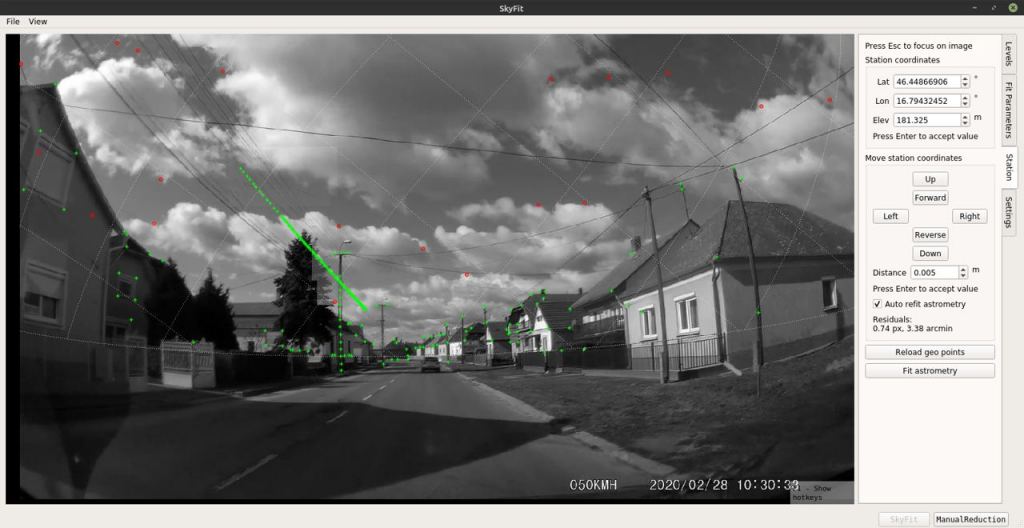OK, all you meteorites that are falling to Earth … You are being watched!
The ever-expanding use of security cameras, doorbell cams and vehicle dashcams have increased the number of fireballs that have been spotted streaking across the skies. And sometimes, all that visual data provides the side benefit of allowing rocks from space to be tracked and found.
Back in February of 2020, hundreds of people across Slovenia, Croatia, Italy, Austria and Hungary reported seeing a bright ball of light hurtling across the morning sky, along with a loud explosion and a visible trail of dust in the sky. The event was captured by several cameras, including one that was on a cyclist’s helmet.
“By combining observations from several cameras around 100 kilometers apart, a fireball’s position can be pinpointed to within 50 meters, and it’s usually fairly easy to compute its atmospheric trajectory and pre-atmospheric orbit this way,” said Dr. Denis Vida from the University of Western Ontario, who presented a paper on finding the meteorites at the Europlanet Science Congress (EPSC) 2021.
Vida and his colleagues estimate the initial stony object that streaked through the sky was about one meter across and weighed roughly four metric tons. But it broke apart into at least 17 pieces.
Three fragments amounting to 720 grams have been recovered and taken to laboratories for analysis. The largest fragment that was recorded falling in the videos has an estimated mass of about ten kilograms, but is yet to be found. Vida said it may have dropped into a muddy field and may have accidentally been plowed in before its fall area was known.
Vida said the pieces of the now-named Novo Mesto space rock — named after the Slovenian city near where the fragments were found — are ordinary chondrites, and the researchers are hoping to determine where in the Solar System it might have originated. Knowing where it came from could possibly reveal details of the asteroids from its original location, as well as about the early Solar System, the space rock was formed.

Vida said the fireball’s path is in an area where there are several all-sky cameras that specifically look for fireballs and meteors. However, this fireball occurred during the day when most of those cameras are turned off. That’s why footage recorded by the dashcams and security cameras were so important in locating the meteorites.
The researchers said this is one of only around 40 fallen space rocks that have been recovered within weeks of falling to Earth. Another famous fireball was the Chelyabinsk airburst in 2013, which was also recorded by dashcams and security cameras. A security camera caught the moment a chunk of that meteor hit a frozen lake, creating a 20-foot (6 meter) hole in the ice. Divers were able to fish out a 1/2 ton chunk of the Chelyabinsk meteorite that measured 5 feet long (1.5 meter). It broke into three pieces as scientists hoisted it into a scale to weigh it.
Lead image caption: A 48-gram piece of the Novo Mesto meteorite. Credit: Bojan Ambroži? (Center of Excellence on Nanoscience and Nanotechnology, Slovenia and https://bojanambrozic.com/).
Further reading:
Europlanet Press Release
Paper: Novo Mesto meteorite fall – trajectory, orbit, and fragmentation analysis from optical observations

